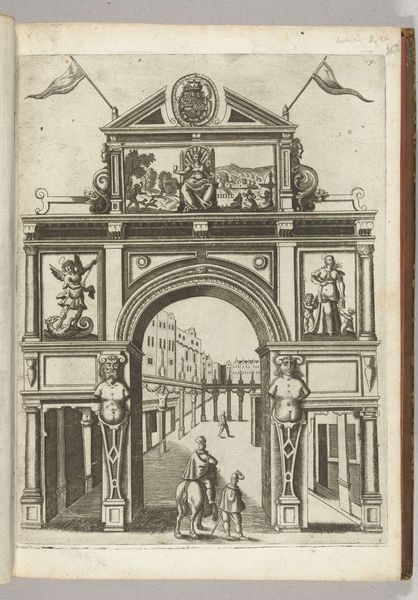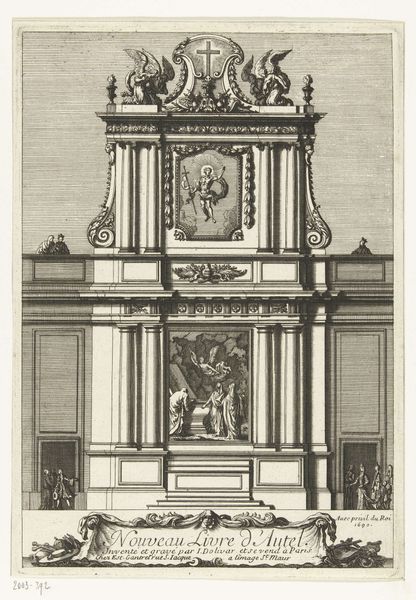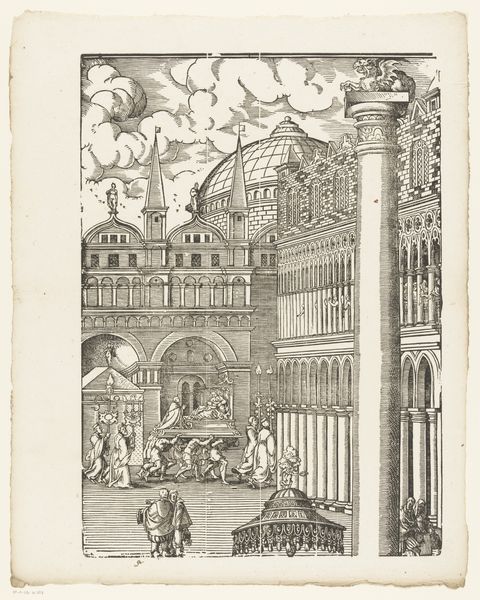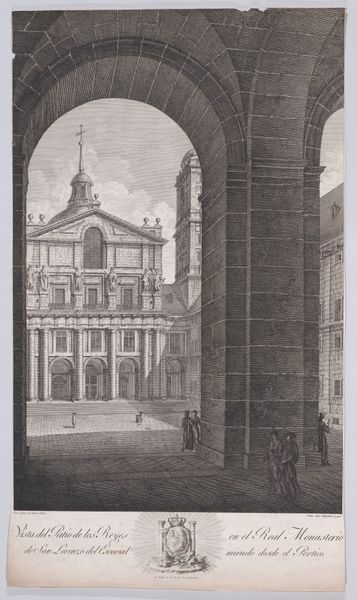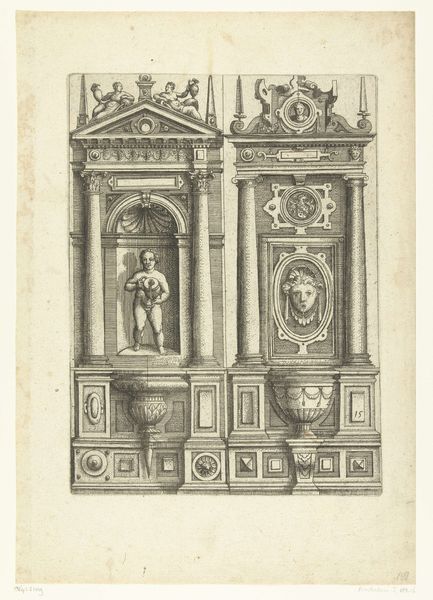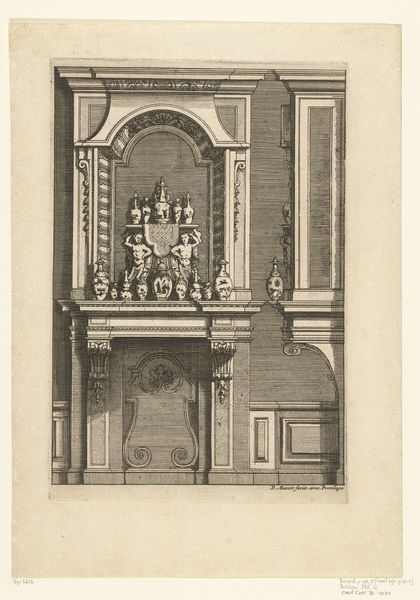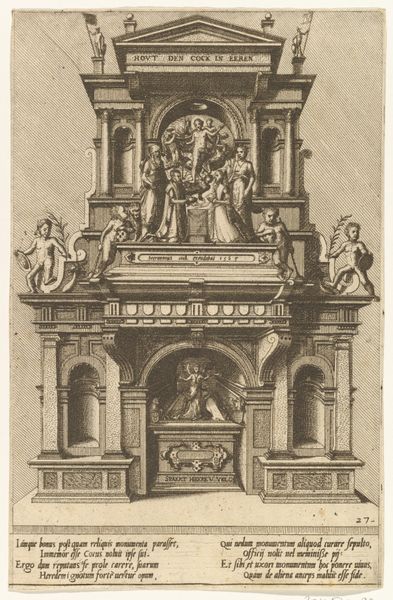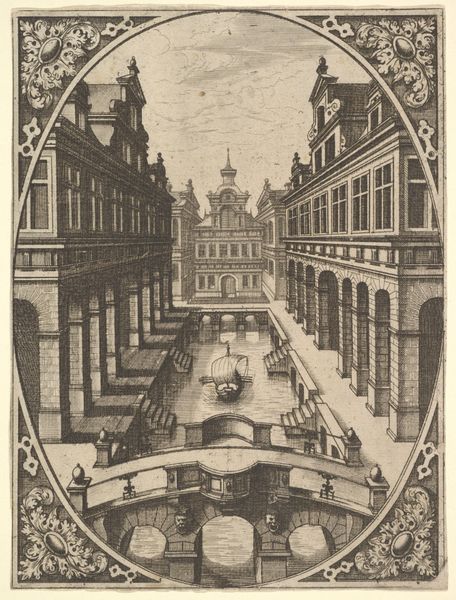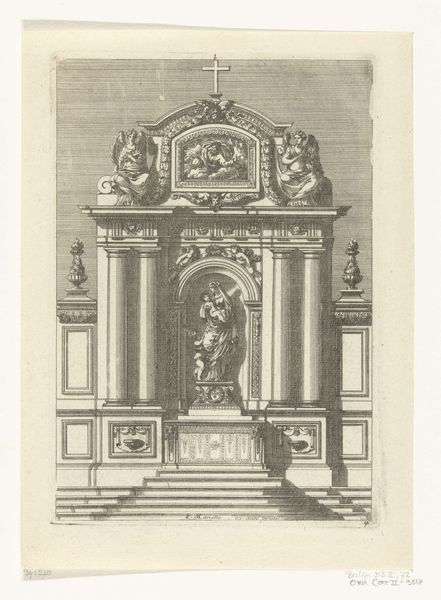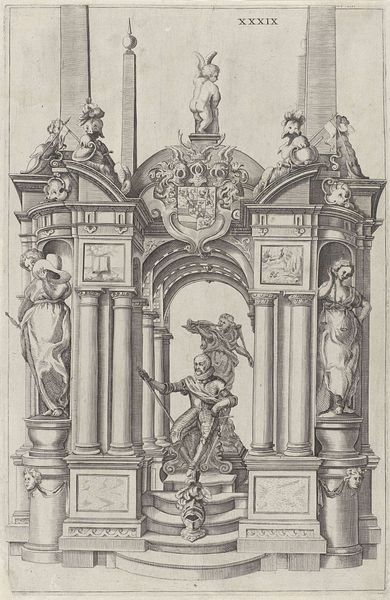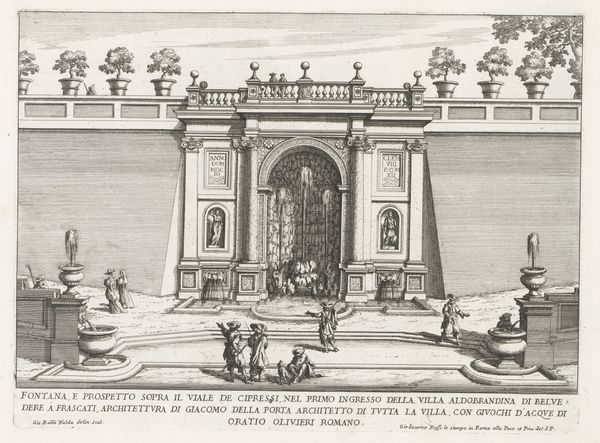
print, etching, architecture
# print
#
etching
#
mannerism
#
cityscape
#
architecture
Dimensions: height 215 mm, width 156 mm
Copyright: Rijks Museum: Open Domain
Editor: Here we have Giovanni Maggi’s "Capitool te Rome," dating between 1576 and 1618. It's an etching – a cityscape rendered in print. I’m immediately struck by the contrast between the detailed architecture and the almost crudely drawn figures. What do you see in this piece, considering its creation? Curator: Considering its mode of production, it's critical to understand etching's role in disseminating knowledge about architecture. Maggi's print is less about "art" in the traditional sense, and more about circulating a specific vision of power tied to urban spaces. The materiality of the etching itself - the copper plate, the acid, the printing press - all speak to a growing industrialization of image production. Editor: That's interesting! So you're saying the process itself is as important as the image? Curator: Absolutely. The print becomes a commodity, a form of visual capital, used to promote and reinforce Rome's symbolic importance. Who had access to these prints, and what kind of knowledge were they designed to transmit? The emphasis on architecture over figures might indicate an interest in demonstrating mastery over the urban landscape, and less in capturing individual human experience. Editor: The scale feels really skewed – almost like a stage set more than a city. Is that intentional, a choice based on available materials? Curator: That deliberate distortion reinforces the idea of the city as a manufactured space, constructed according to specific social and political aims. Consider who commissioned this print. Was it to glorify the city, and what audiences would consume these images? These decisions related directly to Maggi’s craft. Editor: I hadn’t considered the consumer element so directly related to his choices. Now I understand the choices about line, proportion, and architecture in an economic sense. Thank you! Curator: My pleasure. Remembering the material conditions always changes the way we value an artwork.
Comments
No comments
Be the first to comment and join the conversation on the ultimate creative platform.
